Making history along the Meuse
The Meuse Cycle Route follows the course of the river and is an easy cycle route, suited for everybody, in most of its sections. It is especially attractive for history buffs, or simply people that are fascinated by remembrance sites and shared European history. Pedalling through cities that have seen long battles of suffering during the 20th century (like Verdun) or that have been the birthplace of a historic treaty uniting Europe in an unprecedented way (like Maastricht) is a good reminder of the importance of remembrance and reconciliation in Europe.
Verdun
The Battle of Verdun was one of the costliest of the entire World War I. The first stage of the Meuse Cycle Route finishes exactly in Verdun, and is the perfect occasion to stop and reflect on the conflict.
Starting from 21 February 1916, a landmark battle waged in and around Verdun lasted for 303 days with more than 700,000 soldiers dead. This immense European tragedy can now be remembered by visiting several locations such as the trenches, and the fort of Ouvrage de la Falouse – just south of the city. A greenway will then take you to the town of Verdun, where you can park your bike to visit the underground citadel, offering an immersive experience of World War I. Ten kilometres away from the town, you can visit the battlefield, ossuary and necropolis and pay tribute to the soldiers who died in this battle. The Verdun Memorial is a must-visit to learn more about the battle through the personal stories of soldiers who fought there.
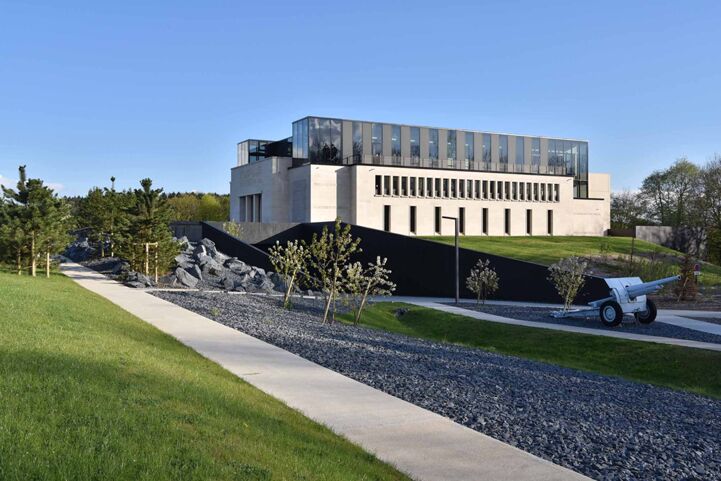
The Verdun necropolis became a UNESCO World Heritage Site in September 2023. A total of 139 remembrance sites related to World War I in France and Belgium received this special recognition; eleven of them are located not far from EuroVelo 19 in France.
Belgium: occupation and resistance
As we cycle through the Eastern part of Belgium, the Meuse remains a very important river, especially for the industries located in its proximity and the towns of Namur and Liège. In recent history, Belgium was occupied by the German Army both in World War I and World War II. These main cities, located so close to the German border, were the first large ones to be invaded in 1914 and 1940. In this area the Meuse flows through the hills: look out for the many fortifications protecting towns and villages for hundreds of years – such as the famous Namur Citadelle – to understand their strategic importance in times of war.
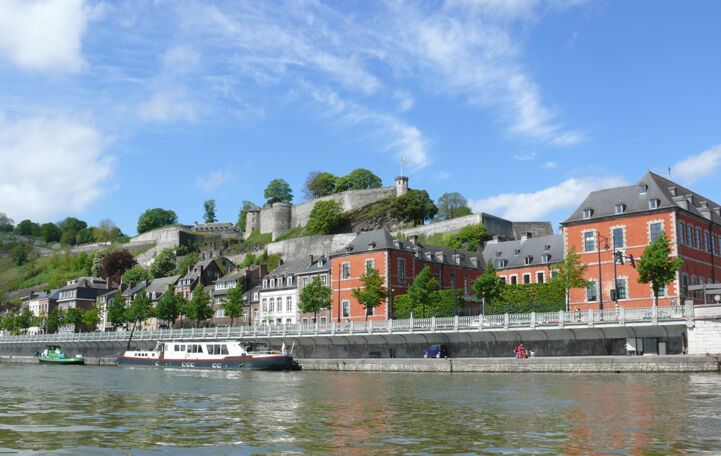
Between Namur and Liège, always on EuroVelo 19, lies the city of Huy. During World War II, the fort of Huy was a concentration camp. The Huy Memorial Fort museum today presents the stories of people who passed through the camp, as well as of civilians who had to endure the occupation. In particular, the civilian population in this area of Belgium suffered heavy bombings and difficult living conditions. The resistance developed as a consequence – if you are interested in the topic, you can leave your bike and take a walking tour through places of remembrance in the city of Liège.
Along the Meuse Cycle Route, you can visit one more fort before entering the Netherlands: Eben-Emael Fort, one of the first ones to be taken in May 1940. Its underground barrack, bunkers and galleries can be visited today to understand more about the start of the occupation of Belgium. Just five kilometres away, but in the region of Flanders, you can re-live the invasion hour by hour through the eyes of soldiers and civilians at the Experience Center De Brug in Vroenhoven.
Maastricht: making the European Union
The first large town following the course of the Meuse in the Netherlands is Maastricht. The Limburg province of the Netherlands is squeezed between Belgium and Germany and is part of the cross-border Meuse–Rhine Euroregion. Recent history was made in Maastricht: it gives the name to one of the most important treaties in the European integration process, impacting the lives of millions of people.
On 7 February 1992, the Treaty on the European Union was signed in Maastricht between the then-twelve Member States of the so-called European Communities. It established the European Union as we know it today: in particular, it introduced European citizenship – meaning the right of people to reside and move freely between the member states. If you can seamlessly cross borders between many European countries while cycling on EuroVelo routes, it is thanks to the Maastricht Treaty.
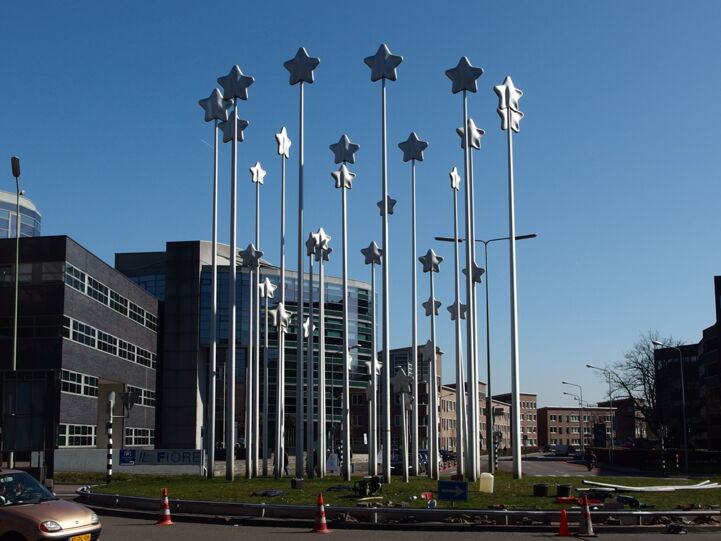
The treaty paved the way for a common European currency, the euro, which made the life of cycling tourists much easier, too. Together with this huge legacy in Europe, the treaty left a small legacy in Maastricht, too: by the Meuse river, the Stars of Europe monument celebrates this historic treaty with dozens of stars moving in the wind.
When cycling on EuroVelo 19, rest assured that you will still feel the European spirit in the air in Maastricht.
Remembering World War II in the Netherlands
The Netherlands is a country where World War II is remembered in a particularly strong way. While the country was neutral in World War I, it had to endure a hard German occupation between 1940 and 1945, before being liberated by the Allied armies. While crossing the Rhine was the last big obstacle for the Allies on their way from West to East, towards Germany, the nearby Meuse was an important river, too. Especially in the area between the Meuse and the Rhine and their delta, you will find countless monuments and plaques telling this history.
If you had to choose one museum about recent history to visit on your cycling trip, stop at the Freedom Museum in the village of Groesbeek, only five km away from the Meuse Cycle Route, not far from Nijmegen and very close to the German border. This newly built museum resembles a giant parachute, reminiscent of the parachute drops in the area. The exhibition tells the story of the 20th century in an unconventional way, through personal stories, objects and voices of people who experienced this history in different ways – sometimes opposite. The exhibition continues until the 21st century and inspires a deep reflection on wars, Europe, and the concept of freedom in every visitor.
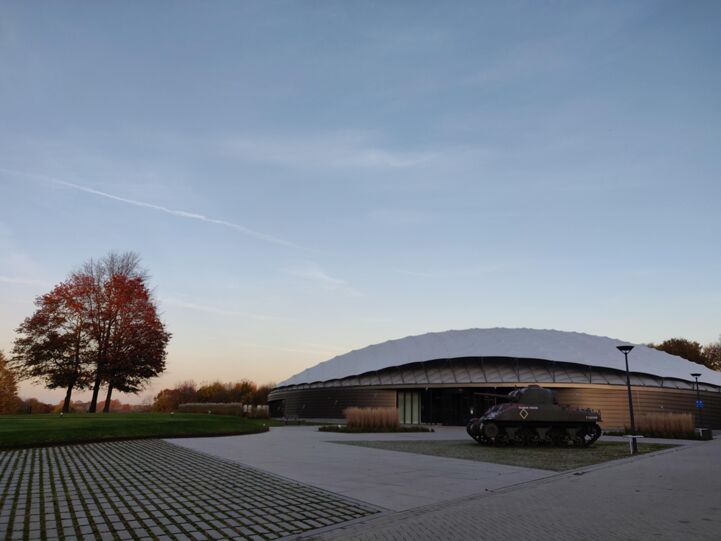
Cycling towards the mouth of the Meuse, you can plunge into World War II history again at the Atlantic Wall Museum in Hook of Holland. The Atlantic Wall was a 2,600 km long system of fortifications dotting the Atlantic and North Sea coast, built during World War II to protect German-occupied Europe from a large-scale Allied invasion. The Hook of Holland was a strategic location, as it is the entry point to the port of Rotterdam – one of the largest in Europe. At the Atlantic Wall Museum, hosted in the so-called table bunker, you can learn more about the construction and operation of this defence line and even the impact on the local population.
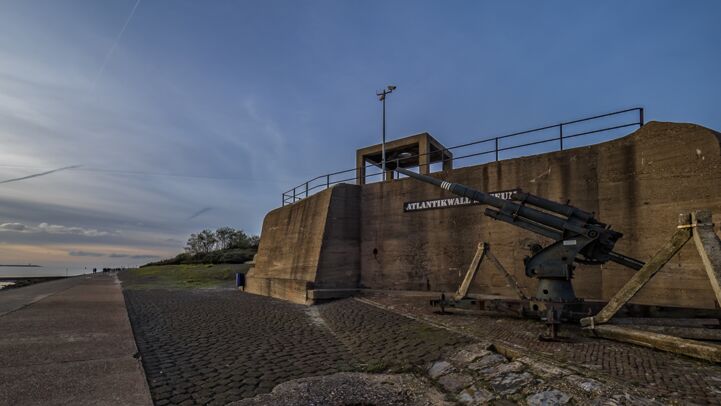
Rotterdam, the end of EuroVelo 19 – Meuse Cycle Route, was almost completely razed to the ground by bombing in 1940. When you cycle in the city, try to spot the so-called brandgrens, the 12-km long fire line that marks the area devastated by the bombing and subsequent fires and is now signalled by special remembrance pavement lamps. Following the destruction of the city, Rotterdam has been completely reconstructed in a modern architectural style that makes it stand out among other Dutch cities.
Whether you are passionate about history or just a curious cyclist, travelling on EuroVelo 19 is an eye-opening trip. Such an important river shaped the history of the people who lived close to it through the centuries, and the recent history of Europe, too. Now, you only have to hop on your bike for a trip through history!
Article by Jessica Casagrande